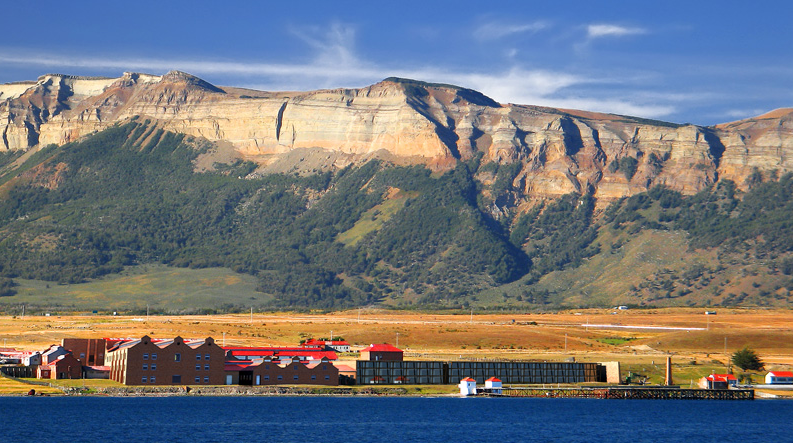


One of the best things about travelling is the chance to learn about ancient cultures, and sometimes, even see a piece of history. There are some remarkably well-preserved ruins and cities all over the world, and here are just a few to add to your travel bucket list.
Machu Picchu, Peru
Machu Picchu, located in southern Peru, is an incredible ancient civilisation perched on top of a mountain, that can only be accessed either by train or trek. Machu Picchu is a UNESCO World Heritage site and was also named as one of the New Seven Wonders of the World, and it’s not hard to see why. Standing at the summit more than four kilometres high, sometimes rising above the clouds, and looking out onto the endless moss-green peaks and valleys of the Andes, is a sight that will remain etched in your memory forever. Machu Picchu is commonly known as the ‘Lost City of the Incas’, perhaps because it was effectively ‘lost’ to the world for thousands of years, until 1911 when US historian Hiram Bingham focused world attention on the site. Machu Picchu is particularly special, and famous, because it remains extremely well-preserved, probably because Spanish conquerors in the 1500s were unaware of its location. Restoration work continues today to bring this fascinating ancient culture to life.
Angkor Wat, Cambodia
Angkor Wat is a truly magnificent ancient city in Cambodia, full of intricate temples, surrounded by perfect still, reflective waters. Angkor Wat is the largest Hindu temple complex in the world and was once the centre of the all-powerful Khmer empire that ruled much of Southeast Asia many hundreds of years ago. The best time to visit Angkor Wat is very early in the morning, to beat the crowds that arrive later in the day. As well as Angkor Wat itself, there are many other fascinating temples to explore, including the Bayon with its 54 towers, the jungle-covered Ta Prohm, and the Elephant Terrace, which is more than 300 metres long and somewhat confusingly, decorated with lion statues.
Petra, Jordan
Petra is the perfect place to unleash your inner Indiana Jones, as it is here that much of the Last Crusade movie was filmed, with the ancient city being the stand-in for the temple housing the elusive Grail. Yet there is so much more to Petra than just Hollywood hype, and the city’s recent history is equally as fascinating as its ancient past. Like Machu Pichu, Petra was forgotten, or simply unknown, to the Western world for thousands of years. It was only in the 1800s that Petra was ‘discovered’, when a Swiss explorer travelling through Jordan was shown the site by local tribesmen. It is thought that the city actually dates back as far as 312BC, making the well-preserved ruins all the more remarkable.
Petra is an incredibly well-preserved city, with intricate rock-cut architecture, and it is worth setting aside a couple of days to explore the area in full. There are a number of guided walking tours available, or if you prefer, meander along at an easy pace with a camel ride through the red-brown dust. There’s almost a new ancient building to discover at every twist and turn, and such is the historical significance and importance of Petra that UNESCO stated it as ‘one of the most precious cultural properties of man’s cultural heritage.’ There are many highlight amongst the ruins of Petra, but the first glimpse of the iconic Treasury, or Al Khazneh, through a gap between two imposing stone walls, is truly unforgettable.
Pyramids of Giza, Egypt
The great Pyramids of Giza in Egypt retain a strong sense of mystery even to this day, despite being thousands of years old. An ancient engineering marvel, no one is absolutely sure exactly how the famous pyramids were constructed, though the most commonly accepted explanation is that huge stones were moved from a nearby location and then dragged into place. But there remain many tunnels and chambers inside that seemingly defy logical explanation, adding to the intrigue.
The Pyramids of Giza are part of the greater Giza Necropolis, which also includes the instantly recognisable Great Sphinx statute, as well as a workers village. There are three main pyramids, with the largest, the Great Pyramid of Giza looming nearly 140 metres tall. The Egyptian pyramids are an iconic symbol all over the world, and as the oldest of all Seven Ancient Wonders of the World, a visit to Giza is an absolute must for anyone with even a passing interest in ancient history and civilisations.
The Acropolis – Greece
The Acropolis is widely regarded as the most important historical site in Greece, in the country which gave rise to modern democracy and law, amongst other things. The Acropolis overlooks the Greek capital of Athens, and consists of the ruins of several ancient buildings of great significance. Of these, the most famous is the Parthenon, with its instantly recognisable round column structure. The Parthenon was constructed as a tribute to the goddess Athena, and features examples of the very finest Greek art, through the featured sculptures. The Parthenon, and the wider Athens Acropolis site, are considered to be enduring symbols of the mighty, ancient Greek civilisations. Recently, restorative work has begun on the structures of the Acropolis, to protect these pieces of preserved history, to be enjoyed for generations to come.
Hill of Tara – Ireland
The Hill of Tara, located in County Meath, Ireland, is an archaeological site dating back to the time of the first Gaelic influence in the country, thousands of years ago. Tara is of great historical significance to Ireland, as it was once the seat of the kings. It is thought that more than 140 monarchs ruled from Tara until the 12th century. The most famous of Tara’s ancient monuments is the Lia Fail, or ‘Stone of Destiny’. One of the most important national monuments in Ireland, the Lia Fail was the coronation stone of the High Kings of Tara, and also features in many ancient texts. Elsewhere, the oldest monument is the fascinating Mound of the Hostages, which as the name suggests, was used by the kings to hold hostage ‘citizens of interest.’
What also makes the Hill of Tara such as fascinating ancient site to visit is the fact that much of its history is shrouded in mystery and controversy. Some claim that Tara was less a seat of kings, and rather a site associated with the rituals of kings. Another theory even states that the mythical lost kingdom of Atlantis was in fact in Ireland, with Tara the capital. Finally, in the early years of the 20th century, the famous hill was excavated by a group who were convinced that they would find the Ark of the Covenant, believing the Irish to be part of the Lost Tribes of Israel, but nothing of the sort was discovered.
The Colosseum, Rome – Italy
The Colosseum is a classic and enduring emblem of the once-dominant Roman Empire, dating all the way back to 72AD. This concrete and stone amphitheatre is remarkably well-preserved, and it’s not that difficult to imagine tens of thousands of spectators yelling and cheering at the many gladiatorial battles held at the Colosseum in centuries gone by. The Colosseum is of particular historical importance as it was the largest amphitheatre ever built during the time of the Roman Empire, and is therefore a symbol of the might of Roman architecture and engineering. Whilst the Colosseum is a must-see, the city of Rome is home to many other ancient sites that are definitely worth a visit, including the Pathenon, the Roman Forum, and the Piazza Navona, complete with beautiful Baroque fountains.
Start planning your trip today with your local, personal travel manager.